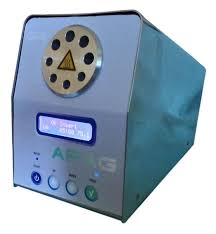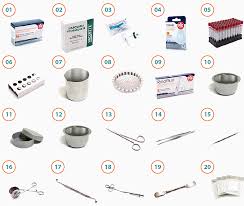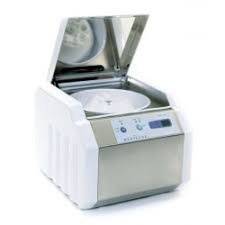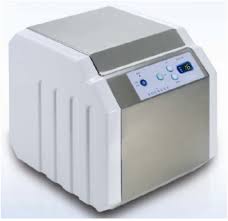Description
APAG is a devise for Denaturation of Albumin
The Medical Electric Equipment APAG by Silfradent S.r.l. is a device designed to heat syrings at a controlled temperature. APAG has been designed for medical practice and has to work with: operating. Temperature: from +10 to +40°C; maximum relative humidity rate 95%, non-condensing.
APAG is designed to facilitate the heat induced aggregation of human serum albumin (HSA), particularly using the faction PPP (plasma poor in platelet). As results of temperature and time controlled heat induction, the protein aggregates became elongated oligomers with fibrillar-like features. The early stage aggregation of HSA follows a downhill pathway that does not require the formation of an organized nucleus.
When HSA is denatured, secondary and tertiary structures are altered but the peptide bonds of the primary structure between the amino acids are left intact. Since all structural levels of the protein determine its function, the protein can no longer perform its function once it has been denatured. The purpose of APAG is the obtainment of a bio compatible polymeric material useful as a filler material in aesthetic intervention.
The presence of inorganic salts like NaCl or CaCl2 can retard the denaturation / aggregation process (Stirpe et al., 2011). Recommended volume of PRP is 2 mL without CaCl2, with polymerization time of 8/15 min in APAG.
During heat stress the formation of intermolecular anti-parallel β-sheet structures was observed in various proteins (Wang, 2005). The underlying formation of hydrogen bonds between the molecules occurred independent from the initially existing secondary structure of the native molecule (Dong et al., 1995). During aggregation some amino acid chains and molecular regions of the protein might become accessible to the formation of new intermolecular interactions. Hydrophobic regions or free thiol-groups might be exposed at the proteins surface enabling association through non-covalent or disulfide bonds.
Although albumin is the most abundant plasma protein, it is considered to be non-adhesive to platelets, as it lacks any known amino acid sequences for binding platelet receptors. However, recent studies have suggested that platelets adhere to unfolding albumin by mechanisms linked to its conformational state (Sivaraman et al., 2009).





Reviews
There are no reviews yet.